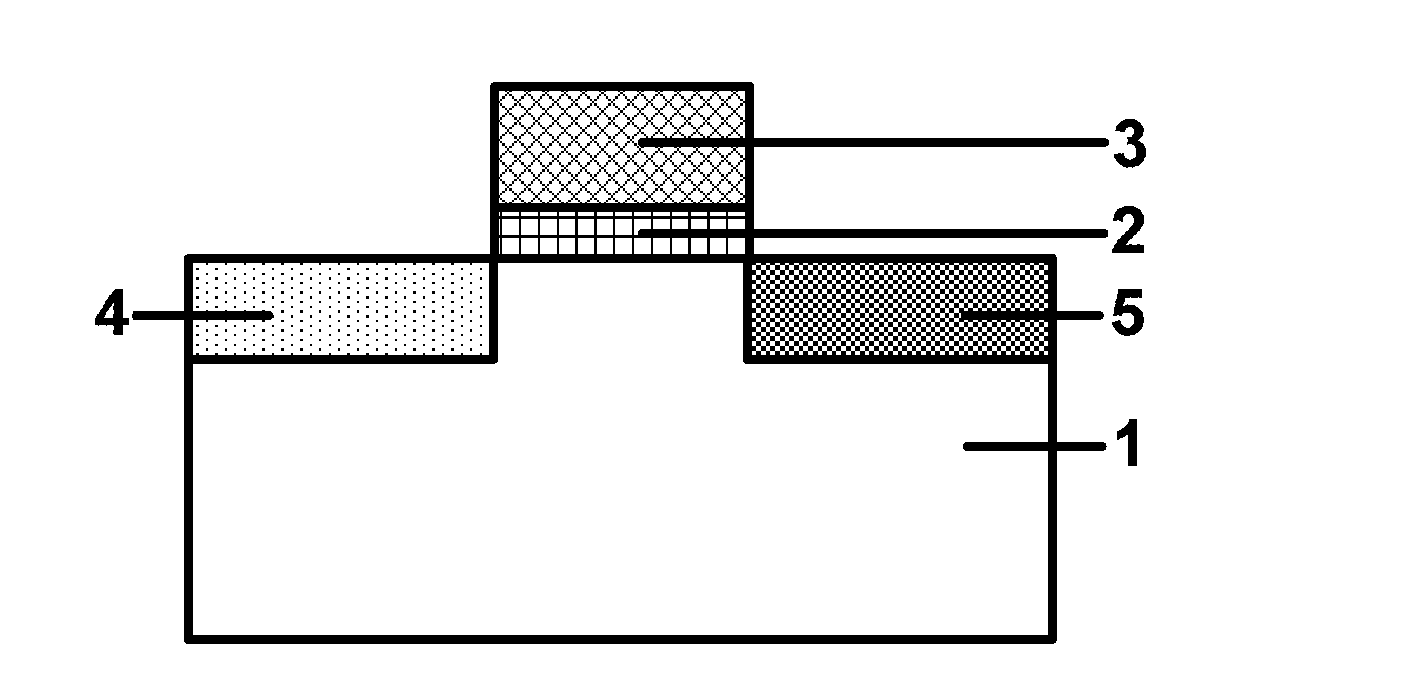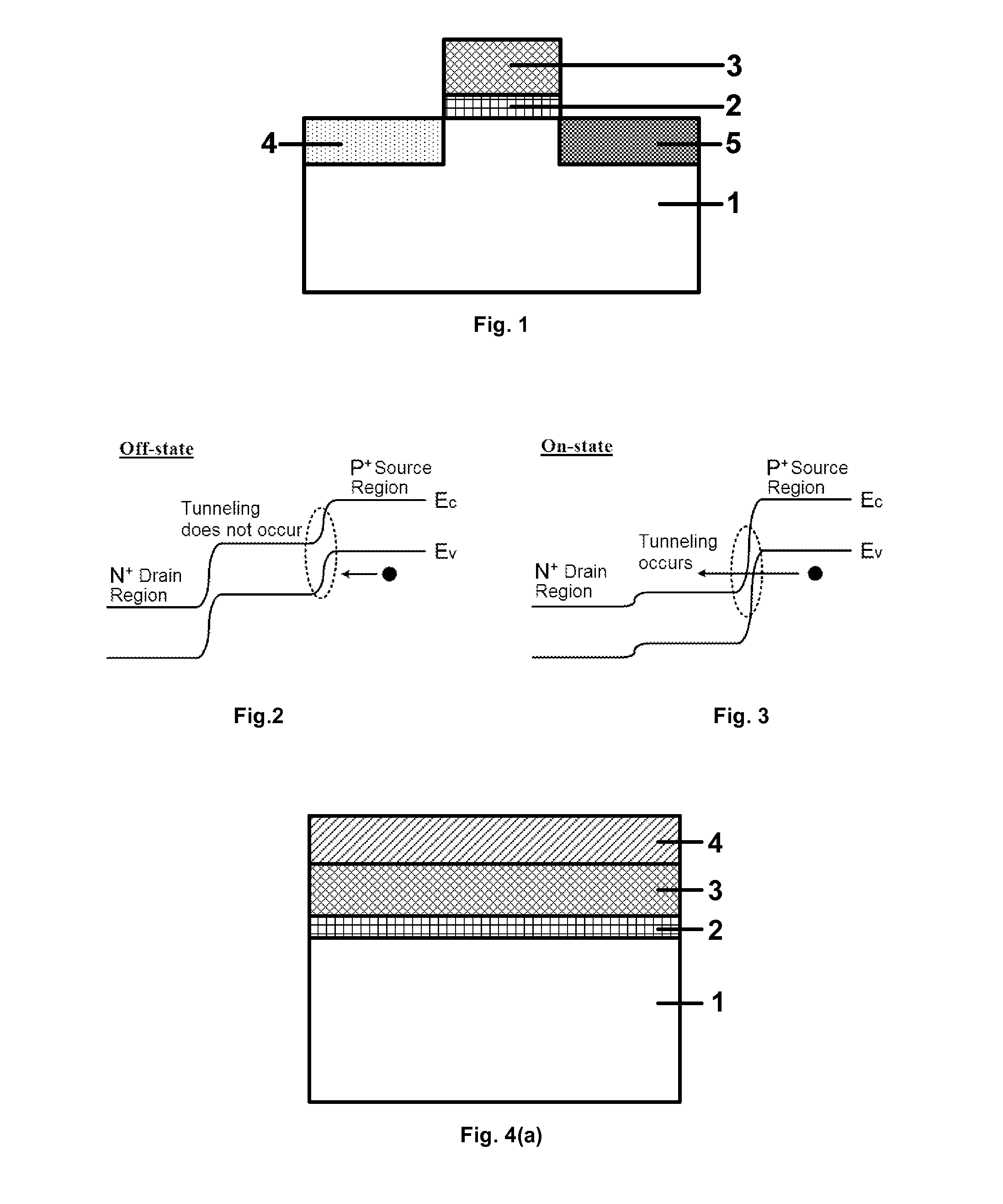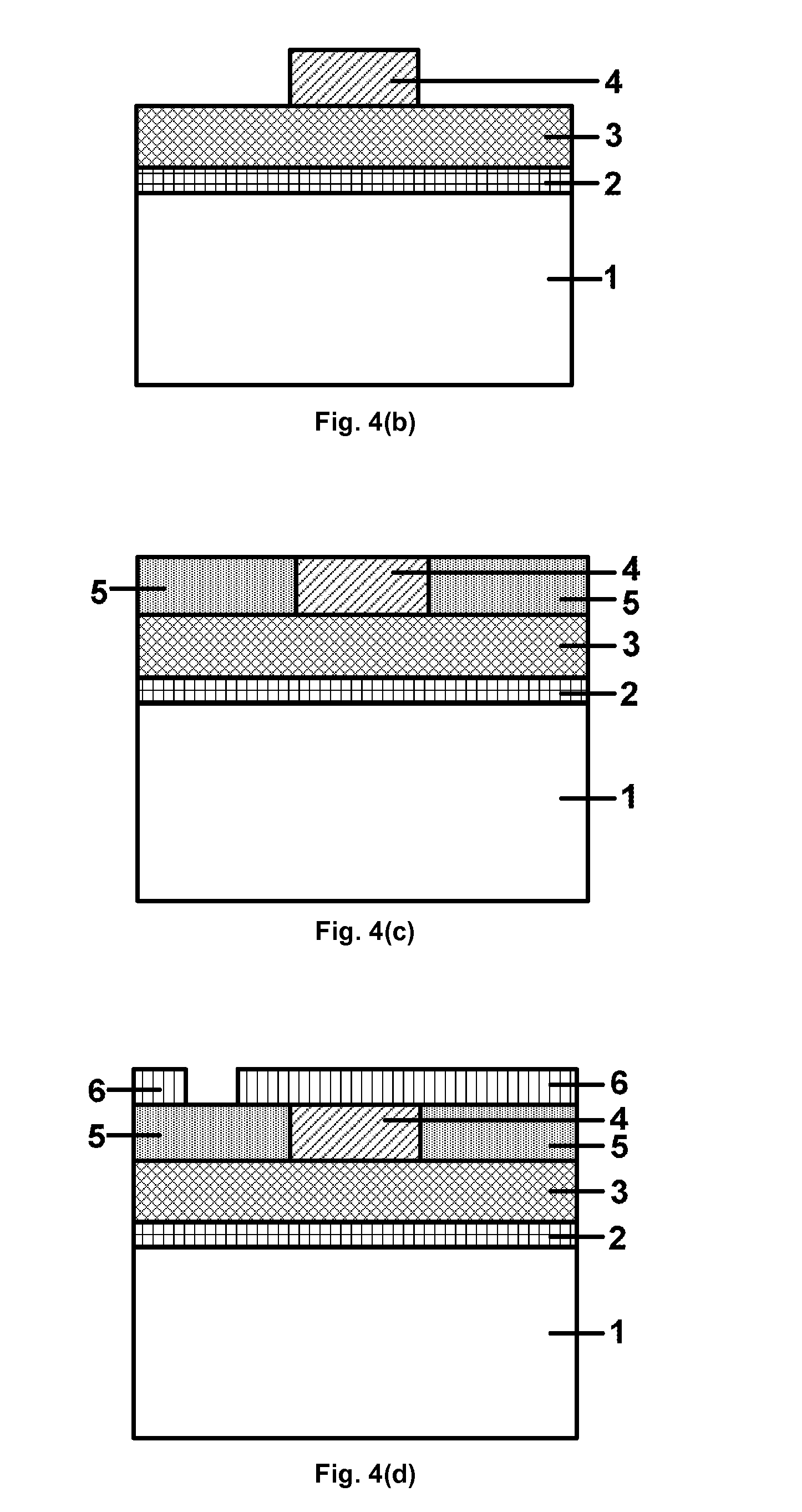Method for fabricating a tunneling field-effect transistor
a tunneling field-effect transistor and tunneling technology, which is applied in the direction of semiconductor devices, diodes, electrical devices, etc., can solve the problems of reducing the device dimension, restricting the device further, and reducing the requirements of the photolithography process for fabricating a planar tfet, so as to facilitate the fabrication of a planar tfet device with stable and reliable characteristics, and reduce the requirements of the photolithography process. , the effect o
- Summary
- Abstract
- Description
- Claims
- Application Information
AI Technical Summary
Benefits of technology
Problems solved by technology
Method used
Image
Examples
Embodiment Construction
[0029]The invention will be described in detail in conjunction with the drawings and specific embodiments, and a process for self-alignedly fabricating a TFET according to the invention will be provided specifically; however, it is not intended to be interpreted as limiting the scope of the invention in any way.
[0030]A tunneling field-effect transistor is fabricated in the following steps:
[0031]1) providing a substrate which comprises a bulk silicon substrate, and defining an active region using shallow trench isolation (STI);
[0032]2) forming silicon oxide, i.e., a gate dielectric layer, with a thickness of 50 Å, by gate-oxide oxidation;
[0033]3) depositing polysilicon with a thickness of 2000 Å on the gate dielectric layer by low pressure chemical vapor deposition (LPCVD);
[0034]4) As implantation is carried out with respect to the polysilicon, with an implantation energy of 50 Key and a dosage of 4×1015 / m2;
[0035]5) depositing silicon nitride with a thickness of 2000 Å on the polysi...
PUM
 Login to View More
Login to View More Abstract
Description
Claims
Application Information
 Login to View More
Login to View More - R&D
- Intellectual Property
- Life Sciences
- Materials
- Tech Scout
- Unparalleled Data Quality
- Higher Quality Content
- 60% Fewer Hallucinations
Browse by: Latest US Patents, China's latest patents, Technical Efficacy Thesaurus, Application Domain, Technology Topic, Popular Technical Reports.
© 2025 PatSnap. All rights reserved.Legal|Privacy policy|Modern Slavery Act Transparency Statement|Sitemap|About US| Contact US: help@patsnap.com



